Klipsch Cinema 600 Reviewed at $549.00
Product Name: Klipsch Cinema 600
Product Description: 3.1 CH Soundbar
-
Design - 9/10
9/10
-
Movies Performance - 8.6/10
8.6/10
-
Music Performance - 8.4/10
8.4/10
-
Inputs and Features - 8/10
8/10
-
Price / Quality - 8.6/10
8.6/10
Summary
Reviewed at $549.00
Pros
- Very simple to setup and to use
- Powerful bass
- Good front performance
- Can be expanded to 5.1 channels
Cons
- No DTS support
- No surround activity
- Is extremely light on extra features
- Cannot be used as a hub
Cheapest Places to Buy :
*We are a reader-supported website. When you buy through links on our site, we may earn a small affiliate commission at no extra cost to you. Home Media Entertainment does not accept money for reviews.*
About a month ago we had the opportunity to check Klipsch’s flagship soundbar, the Klipsch Cinema 1200, which was a beast of a soundbar and can be considered a nice alternative in the premium category from the yearly releases we have been testing lately from Samsung and LG. But this is not the only soundbar they have on offer so in our Klipsch Cinema 600 review today we will be testing one of their mid-tier models and determine if it can be a more affordable and noteworthy entry in its category.
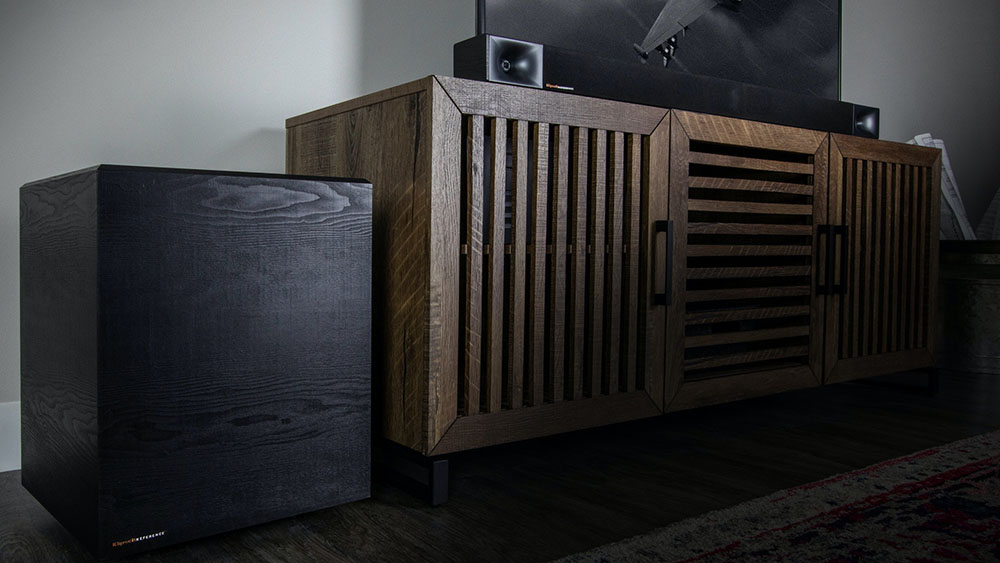
The Klipsch Cinema 600 could be better described as a lower mid-range soundbar as there is also the Cinema 800 covering the mid-tier segment. These two compliment the Cinema 1200, which is Klipsch’s finest, along with the Cinema 400 which is the most affordable soundbar they have on the market today. With these four models it seems that Klipsch managed to cover most of the market in terms of price and specs even if their releases are no so widely popular as some competing brands.
But what sets the Cinema 600 apart from the rest is obviously its horn based design. Klipsch is famous for producing horn based systems and all their soundbars come with the same principle. Specifically the Cinema 600 is a 3.1 channels soundbar-subwoofer combo with 600 watts of power that supports Dolby Digital audio, comes with virtual surround technology, supports Bluetooth streaming and can be expanded with the optional Surround 3 wireless speakers kit to a full 5.1 channels surround system.
From the above one thing that is immediately apparent is the fact that the Cinema 600 is extremely light on features. In contrast to what we have seen with Samsung and LG units that come with a long list of extras, Klipsch follows a different route and preferred to design the Cinema 600 mostly for movie usage keeping it rather simple in terms of what it has to offer other than that. But in order to compete it must be able to offer a pretty amazing experience otherwise its lack of extra features will surely put it behind the competition. So without further delay let’s start our analysis.
Design, Inputs and Features
Exterior
When we wrote our Cinema 1200 review we talked about its distinct look and how its horn based design made it look very Klipsch like. The Cinema 600 may be smaller and more compact than its bigger brother but its overall look remains the same as Klipsch wanted to keep parity between the four released models they have.
The Cinema 600 is a more compact soundbar but it still has a pretty considerable length meaning that it is mostly meant for TVs of 55″ and above. Measuring 45.1″ x 2.9″ x 3.3″ (114.5 x 7.3 x 8.5 cm) the unit is very easy to handle and setup as any soundbar should be. Coming close to 3″ height means that most probably you will not have problems with your TV’s IR sensor but since there are a few TV models out there that are very low it is always best to measure beforehand just to be on the safe side.
With the unit being close to the $500 price tag you should not expect miracles or anything fancy in terms of premium materials being used. Just like the rest of the Cinema series the 600 is using a black cloth grille that covers most of the front, top and part of the back side and certainly makes the unit look a bit cheaper than it really is. It is also easier to catch dust while if you have small children take extra care of it because if it gets ripped you will bot be able to change it.
Both edges of the unit feature exposed horn based tweeters covered by what seems to be a wood exterior but in reality it’s just plastic. The right side facet is detachable and hides a couple of USB ports while above the right horn we find the built-in buttons providing some basic control. These are physical buttons making it easier to distinguish them in a low lit environment.
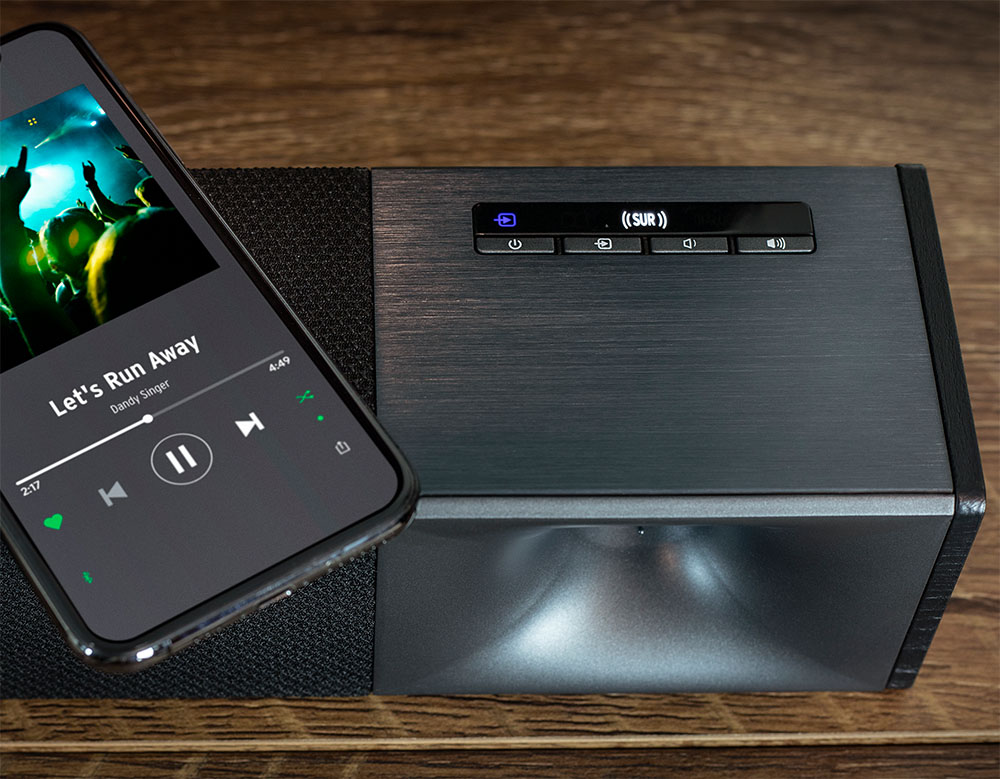
One thing we constantly criticize many soundbar manufacturers for is the kind of displays they are using. We absolutely hate when there is a soundbar with LED indicators showing what the unit is doing forcing us to remember each LED combination. And while we were happy with what Klipsch had done with the Cinema 1200 on that front we are absolutely disappointed with the Cinema 600 which uses exactly these LED lights that we hate so much.
Each time we had to check the manual to confirm that the LED lights that were lit meant something specific and this is the most frustrating process you can do. We have seen much cheaper soundbars featuring full function displays so there is no excuse for a $500 unit not using one. The only saving grace is the addition of LED icons above the built-in buttons which light up depending the sound mode that is active. It is not the most practical one but at least this provides a bit more information regarding the output of the unit.
In the box the Cinema 600 also comes with special wall mounting brackets and with its size it is very easy to place in on. At the back of the unit we find a single big inset that houses all the connection ports along with the two holes that you need to use to wall mount it.
It seems that a common characteristic among all these Klipsch soundbars is the huge subwoofer they come with. The one with the Cinema 600 is smaller that the one we saw with the Cinema 1200 but still for the category and price of this model it can still be considered on the larger side.
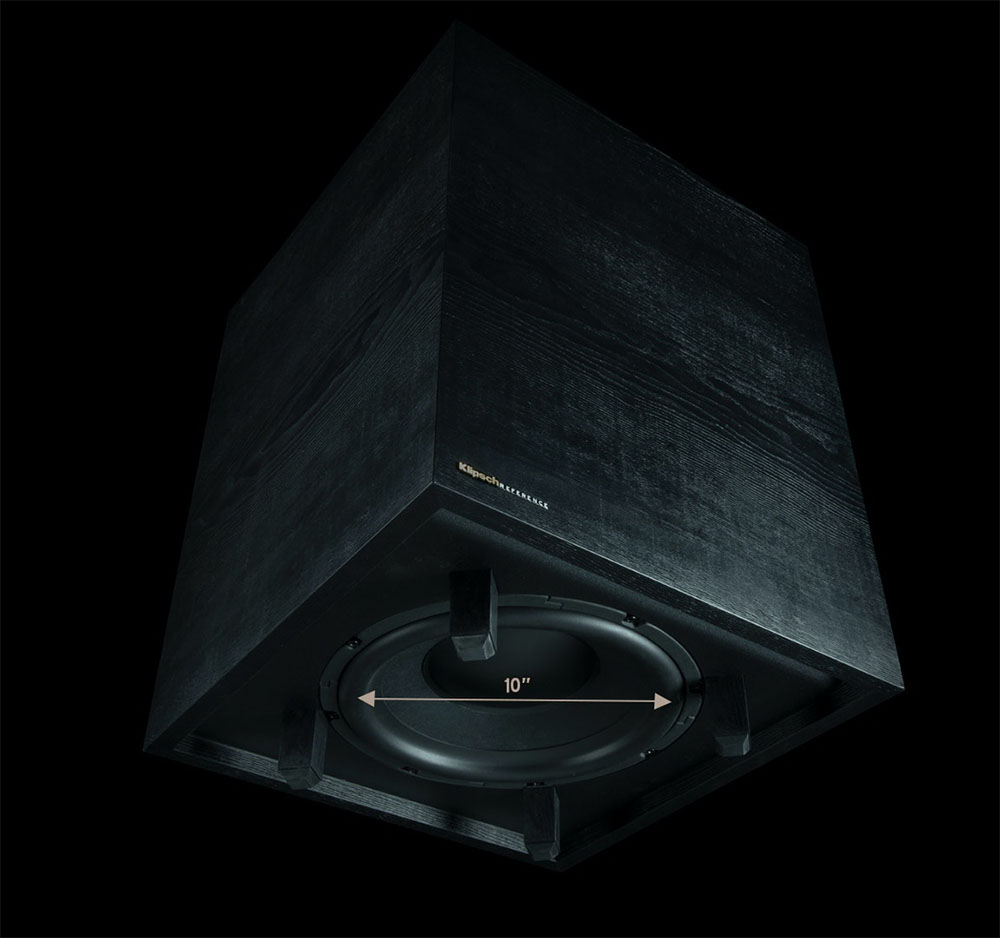
The subwoofer is made out of wood or MDF of some kind and it’s the usual cubic design with four wood legs keeping it above the ground at certain height in order for the down firing driver to do its job. At the back you will find a single pair button along with its LED light as the sub is connected wireless to the main unit. Its size is surely what will catch the eye measuring 14.3″ x 18.4″ x 14.3″ (36.3 x 46.8 x 36.3 cm) so if you are tight in space make sure this one fits in your room.
The Cinema 600 is not all that much different from all the other Klipsch soundbars. In terms of design you either like it or you don’t as its horn based look is certainly not for everyone. Build quality is good enough, even though nothing to brag about, and if there is one thing we definitely didn’t like this would be the LED indicators Klipsch used instead of a full functions display.
Internal Hardware
The Cinema 600 is rated as a 3.1 channels system so what we have here is the three main channels in the soundbar itself along with the subwoofer for the low frequencies. All Klipsch soundbars seem to feature the exact same woofers and tweeters but in different configurations.
And as this is a Klipsch product it means that once again we find a trio of horns being utilized. Each of the three main channels utilize a single 1″ (25.4 mm) linear travel suspension tweeter that is placed on a proprietary 90 x 90 tractrix horn. The center channel also comes with dual 3″ (76.2 mm) fiber-composite cone woofers while each of the right and left channels utilize one of these.
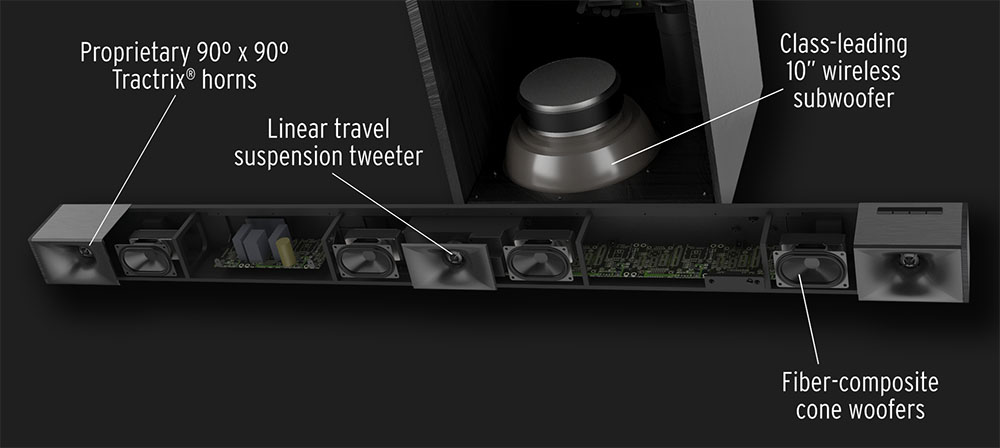
Lastly for the subwoofer Klipsch decided to go with a 10″ down-firing cone, which certainly is impressive for this category and price. The whole system has an impressive power rating of 600 watts and that’s why the name Cinema 600.
Connectivity
The majority of the connection ports are located in the central inset located at the back of the unit.
The soundbar comes with a single HDMI port, one digital optical input, a subwoofer output and an analog audio input. That’s all there is to it. There are also a couple of USB ports hidden under the right cap with one being used only for service while in the other you can connect a USB dongle for the Surround 3 expansion kit.
With a single HDMI available the Cinema 600 cannot be used as a hub so your only option is to use the ARC function available to pass audio from your TV. On the other hand if you don’t have a HDMI port available in your source device you can use the optical port as an alternative. The Cinema 600 does not support Dolby Atmos so you are not going to be missing anything from the port’s limited bandwidth. Lastly you can also connect a cable from the headphones output of your TV to the analog input but this way you are going to get only stereo audio.
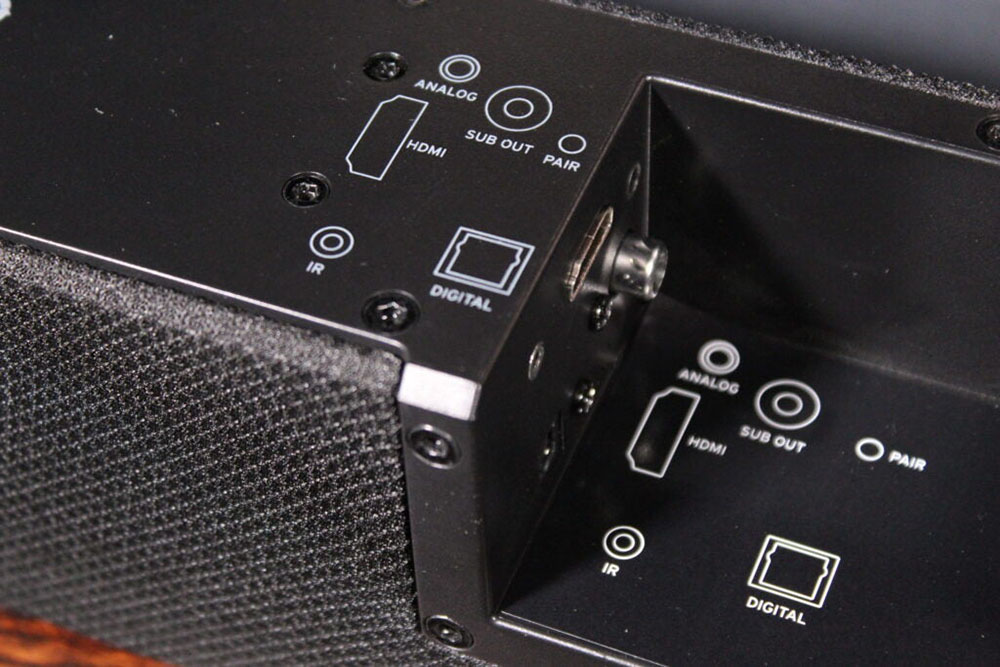
As we saw in the Cinema 1200, what is surprising is the addition of a subwoofer output in order to add a 2nd one…if the one available is not enough, although we find this very hard to believe.
Klipsch nowhere mentions what kind of HDMI port the Cinema 600 is using but this doesn’t matter much as there is no pass-through capabilities that could affect the incoming signal.
In general we get a pretty basic layout. Enough to cover all situations but barely enough for more advanced setups.
Control Options
Next we will be looking in the ways you can control the soundbar. We already mentioned a couple of built-in buttons but these provide some very specific functions and for full soundbar control you will certainly need the remote. Being placed on the top right side above the horn tweeter we find a power button, an input selection button and volume controls. These buttons are physical which we vastly prefer as it makes it easier to find them in a low lit environment.
As for the remote this is exactly the same as the one we used in our Cinema 1200 review. It’s the usual plastic dongle with rubber buttons and uses IR signals for its commands. Buttons are big enough and have good spacing between them and in general its layout is very simple and will not frustrate you trying to find the correct button.

One thing that we loved about it is its backlight function as it is motion based and you don’t have to press a key to light up. This is probably the best feature of the remote and one that all manufacturers should adopt at some point.
But except from the remote there is also a dedicated mobile app called Klipsch Connect which lets you control the soundbar in almost the same way the remote does. The app, that works through Bluetooth, has been vastly improved compared to its initial functionality and now it can be considered a useful tool as it includes many more functions than what was available originally. There is still a lot of work to be done in order to reach a level that will make it capable of competing with other brands but at least Klipsch is showing that they try to improve it more and more as time passes by.
The Cinema 600 does lack a microphone array and thus there is no built-in Google Assistant or Amazon Alexa support. But unlike the Cinema 1200 that could support these through an external device the Cinema 600 lacks any WiFi functionality so there is no possible way to use voice control even with such an external device.
Extra Features and Services
One thing that is becoming very obvious in all Klipsch soundbars is that compared to other brands they don’t come so fully packed with features. We saw this with the Cinema 1200, which is supposed to be their most premium offering, and it is even more obvious with the Cinema 600.
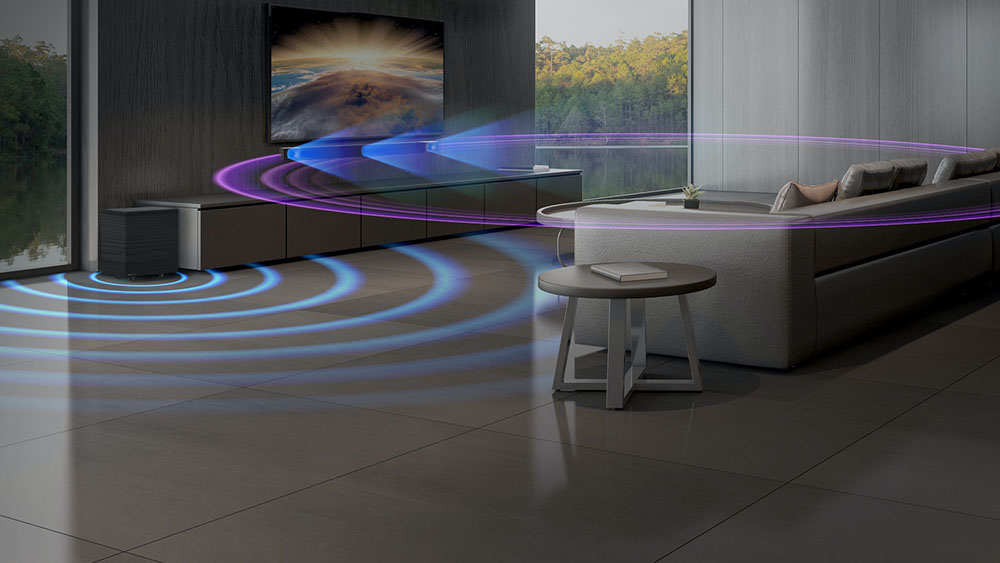
When it comes to audio formats support we only find Dolby Audio. Obviously Dolby Digital is the most widely used format so the soundbar shouldn’t have problem with most content either online or from some disc but keep in mind that there is no Dolby Atmos or DTS:X support so neither of these can playback. There is not even legacy DTS support, which for a $500 soundbar we find unacceptable in this day and age.
As per usual the unit comes with a fixed set of sound modes with Standard, Dialogue and Night modes available. The Dialogue mode offers three different settings to choose from depending on how much priority you want to give in the center channel.
Except from the available sound modes there is also a Surround mode which can be activated no matter which sound mode you use and it is basically activating the virtual tech the Cinema 600 comes with. Using this really depends on the content as we tried it in various situations and it is a hit or miss thing really. In some cases sound felt better and with more volume while in others it sounded very artificial and over-processed and surely altered the original audio signal too much in our opinion.
In terms of calibrating features things are very straightforward as we only find a subwoofer level adjustment. There is no individual channels adjustments but this is not much needed to be honest.
As for the rest of its feature set, there is really not much there. We do get Bluetooth streaming but that’s all there is to it in terms of streaming capabilities showing how limited the Cinema 600 is in this regard. Lastly we should mention that the unit can be expanded to a full 5.1 channels surround system with the addition of the Surround 3 wireless speakers kit. If you have the space and budget for it then we strongly suggest you go for it.

Initial Setup
Any soundbar, either cheap or expensive, should offer an easy to setup and control environment and the Cinema 600 is no different. In fact the soundbar was even easier compared to the Cinema 1200 as its limited features work on its favor here.
Both the surround speakers and the subwoofer connect through a wireless signal which was done without trouble the moment you turn them on. For connecting to our TV we opted for the HDMI connection and used the ARC function to pass the audio to the unit itself. For sound mode we decide to go for the Standard one and used the Surround mode for our movies testing.
The soundbar doesn’t come with any kind of automated calibration system or any other sound adjustments so basically you are set to go. Being so simple to setup and use is one of Cinema’s 600 main strengths making it an ideal soundbar for anyone that wants a simple audio system that doesn’t require much in terms of calibration and audio adjustments.
Movies
We started our testing with Rogue One and we used the Dolby Digital mix available in the 4K UHD disc. We skipped forward to the last act of the film, the battle of Scarif, which remained as impressive as with any other audio system we have listened this beforehand.
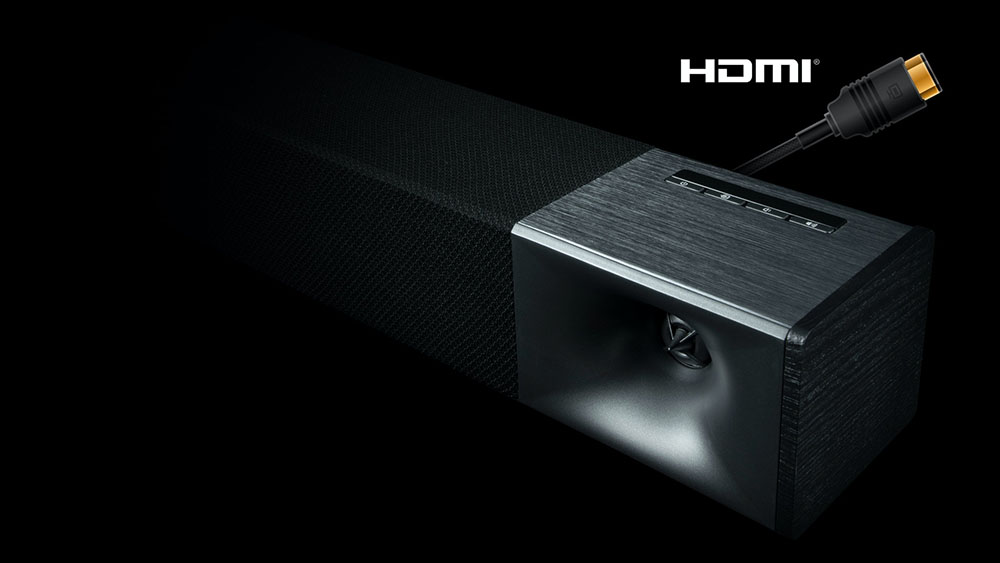
The Cinema 600 immediately made a difference compared to what we were hearing through our test TV. The front stage became more dynamic, with more detail, more volume and more expansion and depth. Panning effects were obvious but the unit’s ability to render these positional changes was more subtle than some other soundbars we tested before.
The unit had very satisfying tonality and its mid-range was more balanced with the rest of the frequencies which is a bit unusual to see in a horn based system. The presence of the center channel allowed the Cinema 600 to offer very crisp and clear dialogue even though we were not using the dedicated dialogue sound mode.
The bass was nothing less than impressive and this was to be expected as the sub is such a beast for this size of soundbar so we were expecting only good things. It was the kind of powerful low end that will shake you but never will overshadow the rest of the action. Obviously depending on how much you like this you can make adjustments to its volume level. But overall even with busy scenes it never choked or felt like loosing its grip.
The soundbar is not Dolby Atmos capable so obviously there was no overhead activity but even so the kind of depth we were getting offered plenty of satisfaction and immersion. In the same manner if you don’t have the Surround 3 extension kit, as we didn’t during our test, the soundbar failed to throw us in the middle of the action either we used the Surround mode or not. Yes, the Surround mode did feel slightly better with an action film as Rogue One but did nothing to bring the action to our sides or behind us.
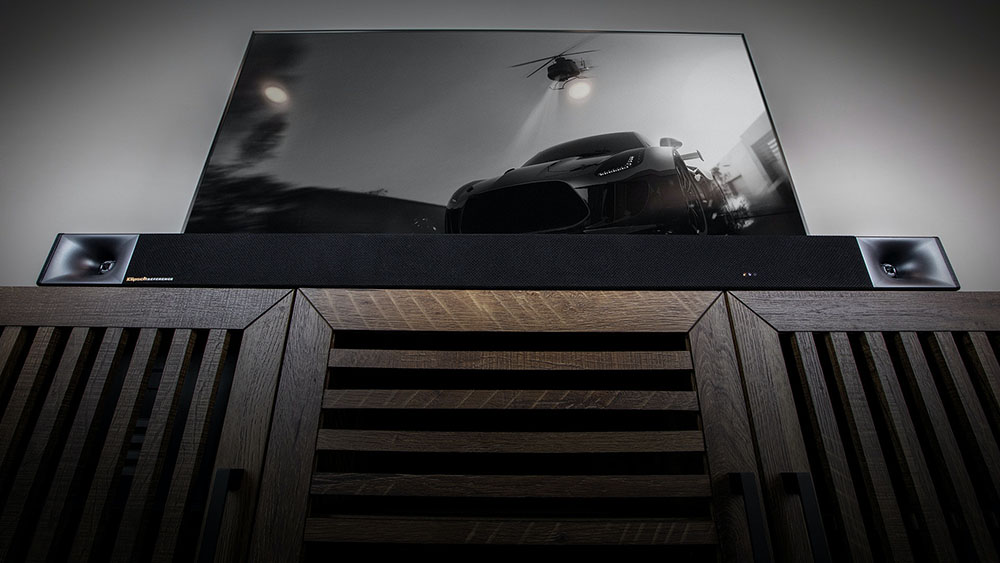
Next we decided to try out an old favorite, Avatar in Blu-ray which does feature a Dolby Digital track that can be decoded by the Cinema 600. Once again the unit showed us how capable it was at rendering a very pleasing soundstage at the front of us. Pandora’s jungles came to life as different sounds from various positions were faithfully rendered. Obviously any sound originating close or behind our position could not be accurately sourced but there was some good separation between the front channels and thus was able to offer good sound imaging.
The Klipsch is no shy of bass power and the 10″ sub will make sure to shake you and hit you with constant sonic waves of low end mayhem. Everything from explosions, machineguns and helicopter motors to pterodactyl-like wings flapping and AMP suits heavy steps and mechanical noises had exactly the weight they needed in order to feel authentic and realistic.
The soundbar was a bit lacking in side extension as both its size and the lack of side-firing drivers resulted in a more constraint immersion bubble but still enough to be entertaining. On the other hand depth was much more pleasing and you could sense sounds that could travel from the TV to the viewer’s position even though in the end it could not entirely envelope us.
Last test of the day and we chose Terminator: Dark Fate and the soundbar behaved exactly as you would expect from such a top rated production. Frenzied action which the unit was very capable at reproducing with a lot of details among its three channels. Sound distribution was even but with good separation and dialogue was distinct even through all the destruction.

Obviously the sub was right at home as there was not a single moment that we wouldn’t feel its shaking power. The Klipsch did an excellent job at blending the sound effects with the music making the end result feel really easy to the ears.
The Cinema 600 is not the kind of soundbar that will drop your jaw to the floor and obviously you shouldn’t expect as such from a 3.1 channels system. But what it does, it does really well. It’s like it knows its limitations and never try to do more than what it really can. And for that reason what we heard we definitely liked. Energetic front soundstage with good separation between the three channels, clear dialogue, plenty of details and a thunderous bass was its key characteristics. Exactly what you seek for a pleasing movie experience.
Music
For our music testing, since there is no USB playback support, our only option was to stream some music through the available Bluetooth functionality. This is the only way to feed the soundbar some music so we were left with no other choice.
Once again the soundbar lacks the wide selection of music modes so the Standard one was the only way to go. As for how it sounded we can say that we did like what we heard and the horn based tweeters really helped here a lot. Vocals were very vibrant and full of life but without becoming bothering or tiresome to the ear.
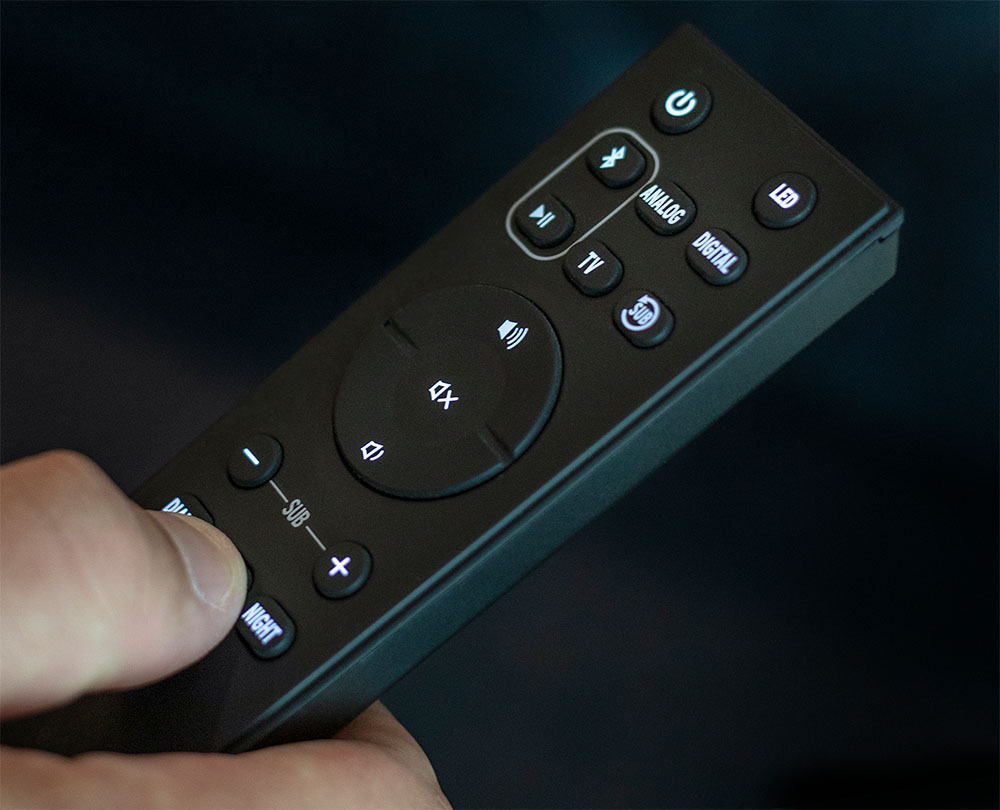
It’s mid-range was balanced enough while its bass was impressive as the sub dived deep enough without loosing in clarity. And since we talked about the bass we were impressed that even in higher volumes the low end never felt boomy or muffled. The unit can go really loud, that’s for sure and it can do so with noteworthy control which is not easy to find in this category.
Since we were curious, we tried some music with both the Surround mode and without it and what we can say is that we can see people listening music both ways. It really depends on the music itself as there were performances that would really benefit from the extra volume this mode offers while in some cases the end result was worse and we preferred to turn it off as it altered the original track far too much.
Switching this mode on and off is so easy that we used both ways ourselves to listen during our test time. We tried various genres from heavy rock, soul, jazz, classical and electronic and we could not decide if we should leave the Surround mode on or off all the time. Obviously for purists turning it off is the way to go but this tech has its merits in certain situations.
When it comes to music we will really say more or less what we said in our Klipsch Cinema 1200 review. The soundbar is not bad with music but its limitations cannot allow it to be used mainly for that. The soundbar screams that it was made mostly for movies and its music streaming capabilities are there as an added bonus. It’s good enough to fill the quiet moments between using it for movies and it will do the job just fine.

Final Thoughts
Being the second soundbar we are reviewing in Klipsch’s lineup it is becoming obvious what the engineers of the brand tried to do with the entire lineup. Instead of creating an all around system that cannot only be used for movies but also as an everyday means of entertainment, they opted to focus almost entirely at designing them to perform as good as possible in your home theater room. We are not going to judge Klipsch’s decision but the path they took obviously has its ups and downs.
On the one hand the Cinema 600 performed admirably, considering it’s a simple 3.1 soundbar system. The front soundstage was great with sound filling our test room convincingly while the bass was powerful and with enough details. We loved the tonality of the unit and in our opinion it managed to offer a more balanced frequency range with lovely mids, energetic highs and vigorous lows. The unit did great with music also but it was with movies that we were more impressed and shows what it was meant to be used the most.
On the other hand its simplicity, while it is a major strength, is also one of its most notable flaws. The unit is almost barebones in terms of extra functionality, there is support only for Dolby Digital and you get the absolute minimum in terms of connectivity options. In terms of performance we cannot say we are disappointed but obviously if you don’t opt for the surround kit then you are not going to have any surround action. The Surround mode is good for adding slightly more volume to the sound but it cannot do anything for over-the-shoulder activity.
In the end it all comes down to what you are asking from a soundbar. If you want a simple to use unit with good performance in movies and don’t care at all for any extra features or online functionality then the Klipsch Cinema 600 will do you just fine. It’s all about expectations and the Cinema 600 will do exactly what it was designed to do. And that is to upgrade your TV’s audio for a better theater experience without much fuss.
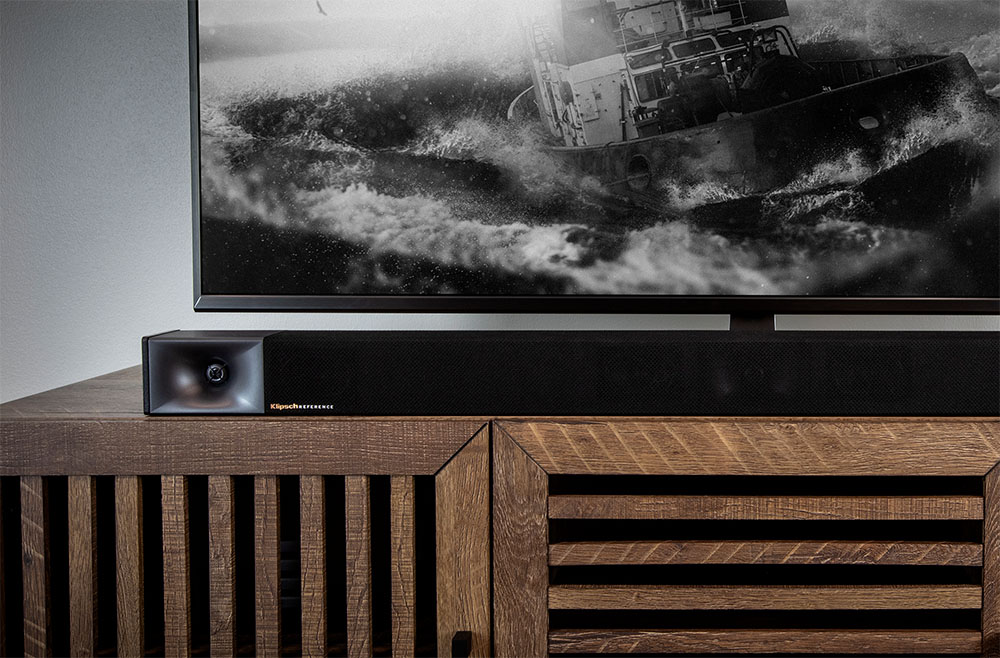
For more reviews you can check our dedicated Soundbar-subwoofer combo reviews list or even look at our Product Reviews Table where you can find the brand and specific product you are looking for.
Cheapest Places to Buy :
*We are a reader-supported website. When you buy through links on our site, we may earn a small affiliate commission at no extra cost to you. Home Media Entertainment does not accept money for reviews.*
I have tried a few soundbars in local stores but really none of them impressed me. I am not looking for something very expensive so the 600 seems affordable for me. But I haven’t been able to listen to it myself, I haven’t seen it in any stores. Can it be compared to some other more commercially available brands?
Hello Kiersti. Well, it’s not easy to answer you that as only you can decide if you like how it sounds or not. Personally I found it satisfying without being anything impressive. But if this is enough for you or not only you can decide. In terms of pure audio output the Cinema 600 is good but it cannot compete to the like of LG or Samsung in extras as the 600 is almost completely barebones. It all comes down to what you are looking for.
I had the chance to listen to the Cinema 600 some time ago and I really liked how it sounded. Unfortunately it had almost no features and I wanted it to have online functionality so in the end I ended up going for a different brand as I could get any of Klipsch’s higher tier soundbars. Good soundbars but not widely available which is a shame as they do sound good.
Yes if there is one minus with the entire Klipsch lineup is that these are so as widely available as some more popular brands in this market. It needs a lot of effort, depending where you live, to find one of these available.